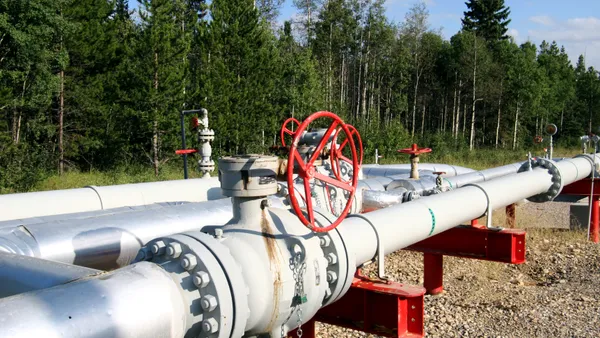Dive Brief:
- Following a settlement with all intervening parties, the Georgia Public Service Commission voted unanimously to approve the merger of Southern Co. and AGL Resources, a move that pushes this deal closer to creating the second largest utility in the United States, the Atlantic Business Chronicle reports.
- The companies said they expect to complete the transaction in the second half of this year.
- The combined company would bring together 11 regulated electric and natural gas distribution companies providing service to approximately 9 million customers. The company would operate almost 200,000 miles of transmission and distribution lines.
Dive Insight:
Now that the Exelon-Pepco has been completed, which made Exelon the largest utility in the nation, another major merger is underway, trying to woo approval to become the second largest utility in the U.S.
AGL and Southern are working through the necessary approvals for their merger, but have a long way to go. The company has made regulatory filings in Georgia, Illinois, New Jersey, Virginia, Maryland and California.
Virginia gave it the greenlight in February, and California approved the merger last month. While the utilities operate throughout the Southeast, a natural gas storage facility located in the Sacramento River valley meant West Coast regulators needed to approve the deal as well.
Combined, the company would control approximately 44,000 MW of electricity generating capacity.
AGL Resources' distribution operations include Nicor Gas in Illinois, Atlanta Gas Light in Georgia, Virginia Natural Gas in Virginia, Elizabethtown Gas in New Jersey, Florida City Gas in Florida, Chattanooga Gas in Tennessee and Elkton Gas in Maryland. AGL shareholders voted to approve the deal last year.
Atlanta Gas Light provides natural gas distribution service to almost 1.6 million customers in Georgia.
While AGL is a distributor, meaning Southern's purchase will not yield a direct stake in gas production, it will give the company a new foothold in the natural gas market. Many utilities have sought to acquire gas infrastructure - either distribution utilities or transmission or production facilities, to take advantage of the stable returns and to lock in lower commodity prices.














